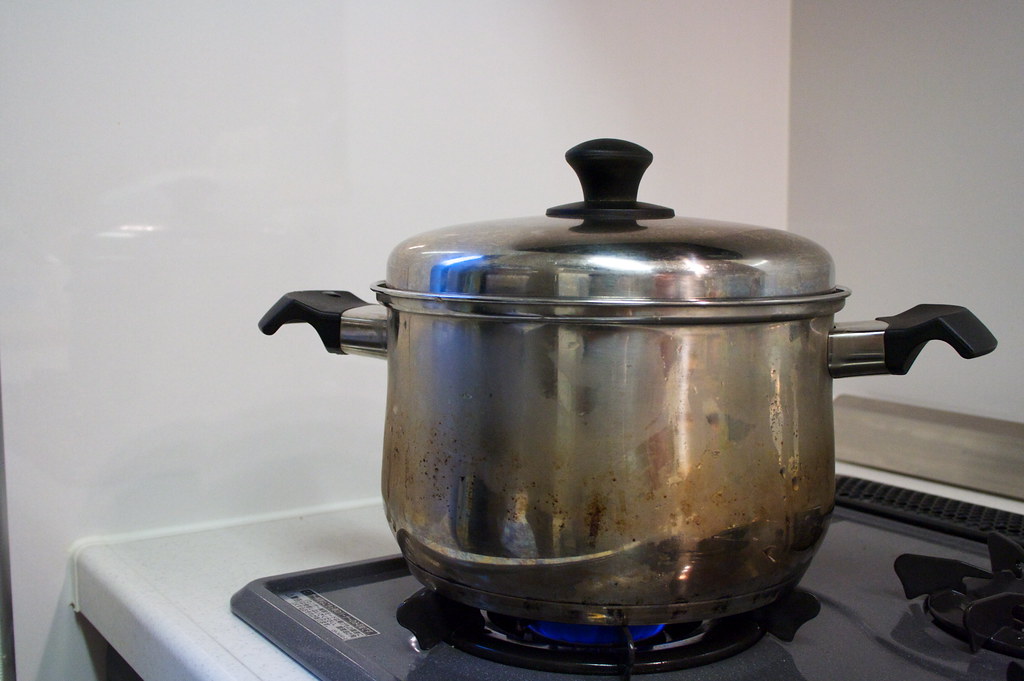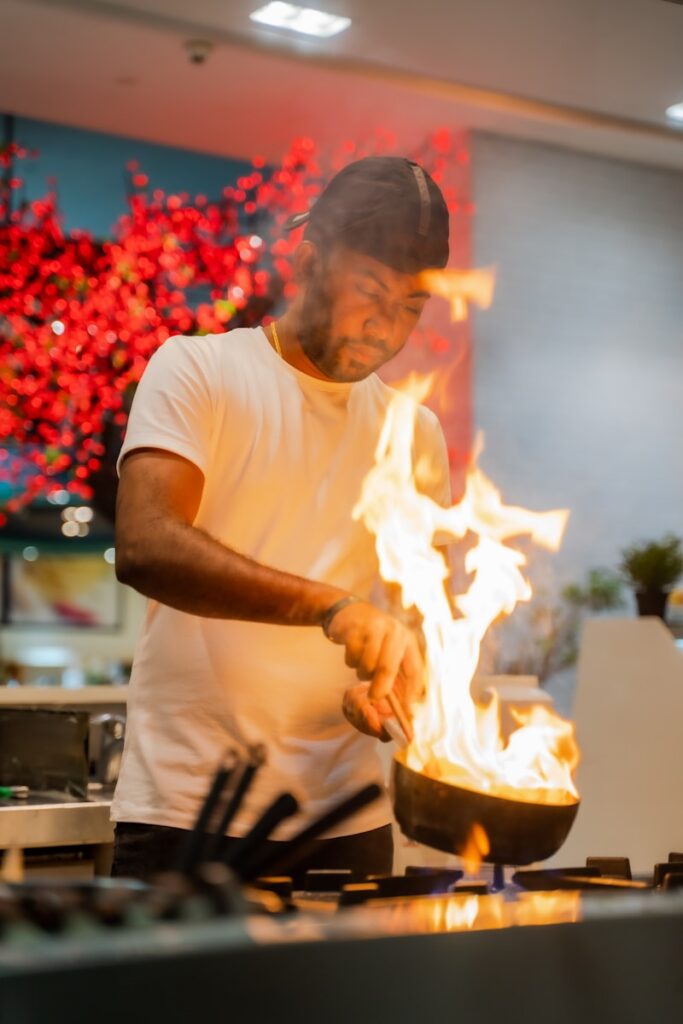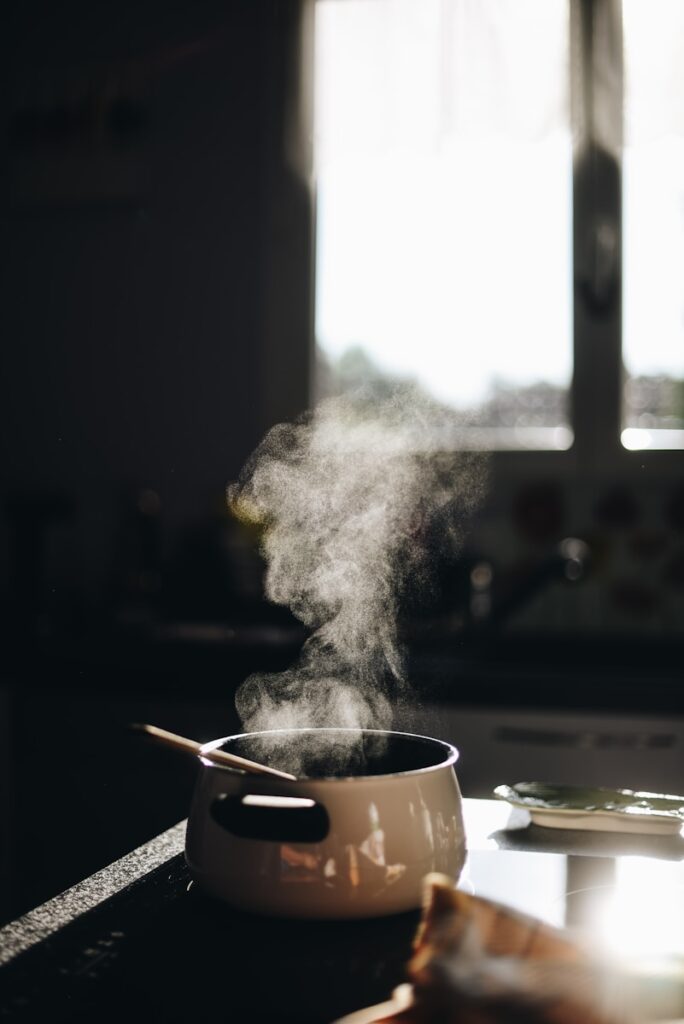Picture this: After returning home late, you find the kitchen smelling like food because a stew has been cooking throughout the evening. Sounds cozy, doesn’t it? You discover that your cooking-savvy roommate has passed the task of overnight cooking to the stove as he sleeps soundly through the night.
This scene, common in households grappling with the demands of busy schedules and the comfort of a home-cooked meal, brings us to a critical question: How dangerous is it to have a pot continue boiling on the stove during the nighttime? We need to explore the intricate issues behind this cooking puzzle.

The simple act of leaving a pot to simmer at a low temperature contains hidden risks that casual cooks might fail to identify. Think about a pot of stew heating at level 3 on a burner range of 12, left unattended until all its liquid evaporates. The biggest hazard to evaluate is whether such conditions create a fire risk.
The findings demonstrate that the situation indeed has an affirmative solution. Contents inside a cooking vessel will begin to char when its liquid levels become too low, generating smoke that may ignite when conditions permit. Safe practice teachings show us that unattended cooking remains a significant leading source of kitchen fires.

There’s more to this than the risk of fire.
There’s more to this than the risk of fire. Carbon monoxide (CO) poisoning serves as an unsuspected main factor in these situations. Many people must face the uncomfortable truth that during chillier weather, they use their gas stoves both for preparing meals and as an alternative heat source. MTO findings indicate that this particular habit produces multiple carbon monoxide poisoning cases.
The deadly symptoms of this dangerous condition manifest as persistent headaches, combined with wakefulness challenges and vision impairments. The Environmental Protection Agency reveals that low levels of CO result in fatigue among healthy individuals yet generate chest pain among heart patients, which signifies that kitchen appliance use should always be handled with caution.

How to stay safe when cooking in cold weather?
Electric space heaters that feature safety systems present themselves as a much safer choice for providing warmth.
We need a fresh examination of our cooking habits. Keeping a keen eye on what’s cooking and ensuring it doesn’t simmer unattended for long periods is vital. When you need to leave food simmering overnight, avoid using open flames because different cooking techniques are safer alternatives.
There’s kitchen etiquette when living with others.
There’s kitchen etiquette when living with others. A set of implicit rules govern shared living spaces, which maintain household safety, yet often get ignored. Leaving a pot on a stove all night creates hazards for residents and disrupts roommates.
Communal space safety requires everyone to clean after food preparation while showing respect for shared kitchenware and meals. Moreover, the kitchen is often the heart of a home, a place where meals are prepared with care and love. Failure to prioritize safety causes a warm and cozy space to become dangerous.

Ready-made breakfast convenience may attract many people, but safety concerns about such methods remain serious. Pots left to simmer throughout the night may demonstrate good intentions, but this practice introduces strong safety threats that surpass the intended ease. Safety must maintain its priority position in every stage of cooking preparations.
To balance busy schedules and homemade food aspirations, everyone needs to prioritize safety along with kitchen efficiency. Our homes serve as perfect dining environments for meals because they remain free from harmful safety risks.
Even while creating slow-cooked recipes like stews, we must balance innovative cooking with safety standards. The allure of simmering a classic Boeuf Bourguignon or a hearty stew overnight might seem like a shortcut to gastronomic pleasure, but it begs the question: Is kitchen safety being sacrificed to facilitate greater convenience in our cooking methods? We will dissect this kitchen puzzle to find the right intersection where culinary creativity intersects with kitchen safety.
The truth is, culinary masterpieces often require a delicate balance of time, temperature, and technique. Julia Child introduced the classic Boeuf Bourguignon recipe to Americans, which Honest Cooking simplified to show how perfect harmony among ingredients creates magic in cooking. The French stew creates tender meat with rich, savory flavors by slowly simmering on a stove surface for several hours. While quality beef, wine, and bacon matter greatly in this dish’s creation process, unwavering cook attention ensures total success.
The first rule of making Boeuf Bourguignon is clear: patience is key. When slow cooking, chefs must be attentive to prevent dangerous conditions such as evaporation or carbon monoxide leaks. Current kitchen devices, including slow cookers, enable people to eat complex meals with greater safety.
Maintenance of kitchen etiquette, together with consideration of shared living space arrangements, remains crucial. Maintaining safety and positive relationships between people sharing a space involves practicing clean-up after food preparation tasks, as well as respectful management of communal appliances. Controls that everyone agrees on stop confusion and keep kitchen science experiments safe.
Maintaining culinary creativity while ensuring safety requires always balancing one’s acclaim with temperature norms. Despite the irresistible appeal of preparing slow-cooked meals, we must stay alert to their hidden hazards.
Through the use of contemporary kitchen equipment, combined with safe cooking methods and an acknowledgment of our shared workspace, we retain the ability to cook both safely and joyfully. As we create heartening meals, let us remain thoughtful stewards of the culinary arts to bring pleasure through our cooking adventures instead of danger.
Related posts:
“Home Cooking Fires” report | NFPA
Kitchen Safety | News | American Red Cross
Is it dangerous to sleep while cooking? – Quora



